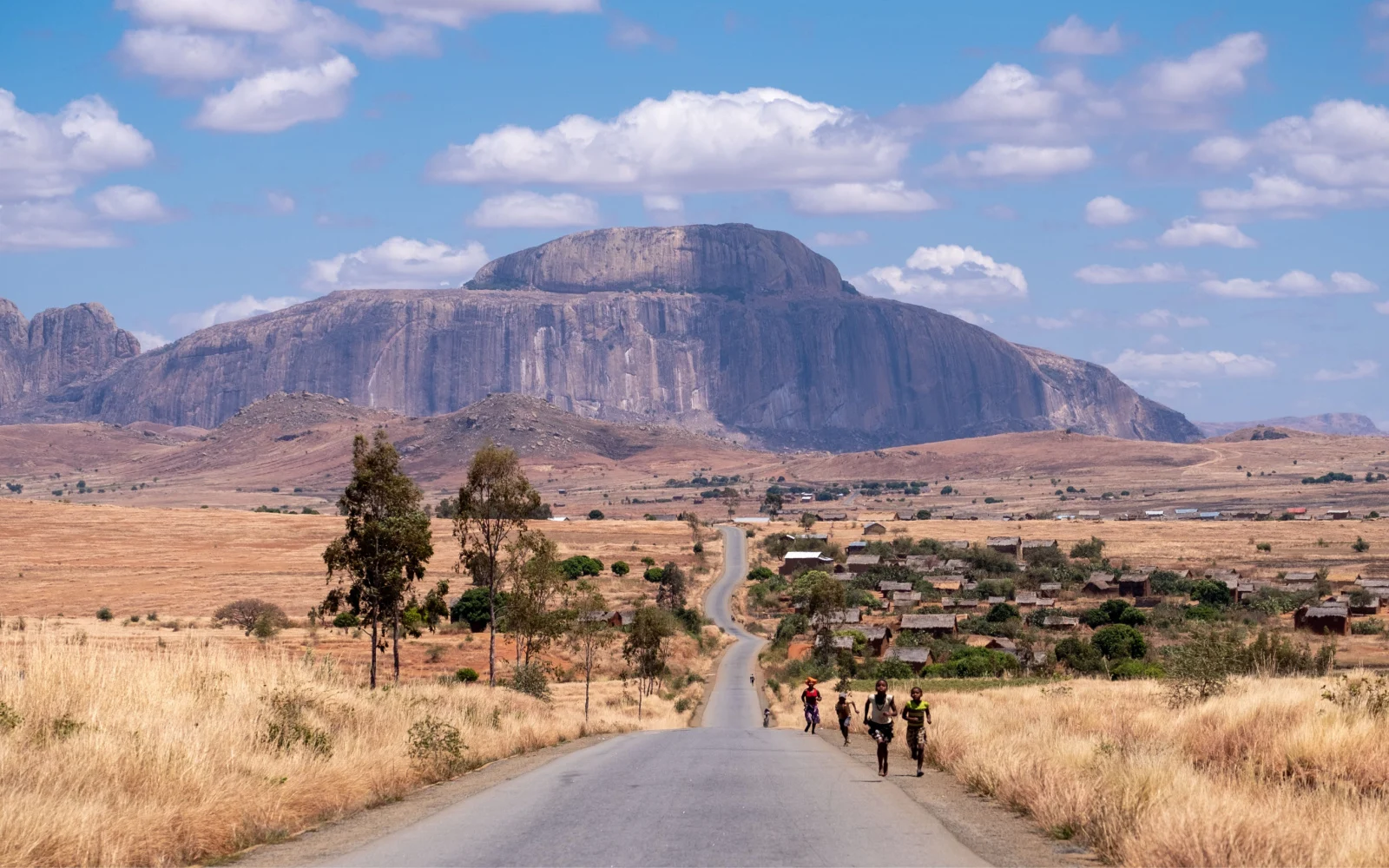Madagascar, popularized by the children’s movie of the same name, has a lot to offer nature lovers. The island country has one of the most unique biodiverse habitats in the world.
It is also one of the only places where you can see the animals, such as adorable lemurs, that the film made popular. Madagascar has a lot of other things to offer visitors. Nature lovers can explore the jungle, including the massive baobabs.
The island also has beautiful sandy beaches and coral reefs, making for perfect exploring when you’re on the coast. However, before visiting Madagascar, you probably want to know more about the practical aspects of visiting.
You can’t learn everything about the island from an animated movie or beautiful photos of lemurs, after all.
But don’t worry — we put in the hard work for you and make a detailed guide for you to read before you go to Madagascar, including safety information about crime and other potential dangers. Let us show you the way!
Is Madagascar Safe to Visit?
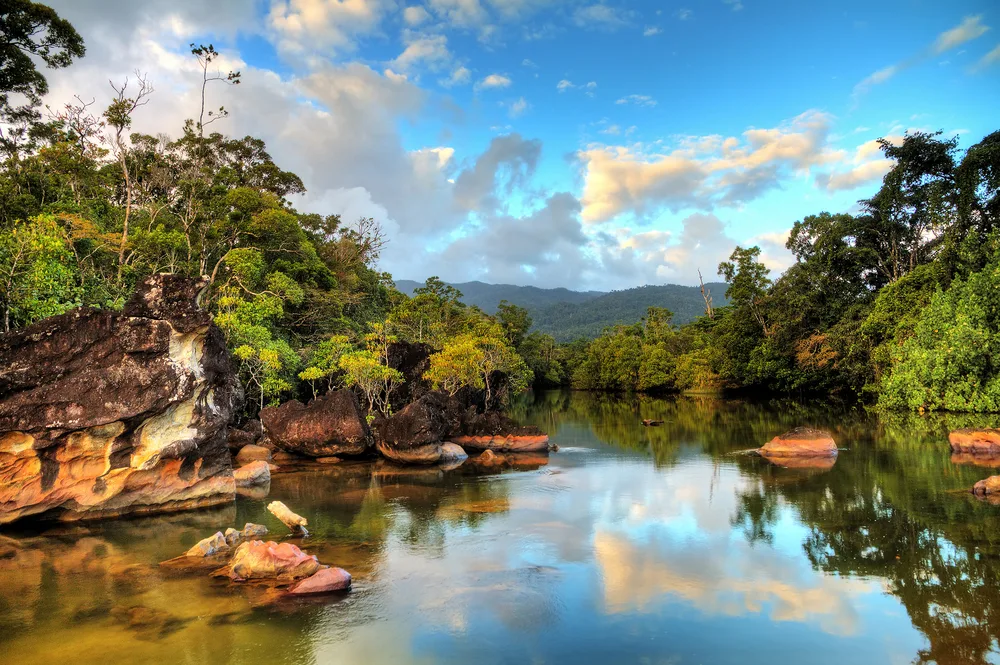
Dennis van de Water/Shutterstock
Real life in Madagascar is definitely not like in a movie. The country is going through a period of political and economic turmoil, which in turn has raised the crime rate.
Although most tourists never directly experience the violence present on the island of Madagascar, it is still something that you should be aware of. Most countries advise their citizens to exercise some form of caution when they go to Madagascar.
The United States government advises its citizens to exercise increased caution in Madagascar due to the high rate of crime, including violent crime in some regions.
Recent instability has made the crime situation worse. Madagascar has had a turbulent recent few decades, and it’s useful to know the context of the place before you visit.
Years of political turmoil were supposedly put to rest after the peaceful election of the new president in 2019, but demonstrations still erupt frequently. The severe economic situation in Madagascar has also led to unrest.
According to the World Bank, the prolonged drought Madagascar experienced from 2018 to 2022 caused near-famine conditions. In early 2023, Madagascar was hit twice by cyclone Freddy in a rare looping phenomenon, further displacing and impoverishing locals.
According to the World Bank analysis linked above, natural disasters and economically devastating events such as famine affect social relationships.
People fall into poverty, societies undergo additional stress, and rates of crime and violence rise. The effects of a four-year famine in Madagascar are still being studied but include problems such as domestic violence, displacement, and assault.
Common crimes that occur in Madagascar include:
- Petty theft
- Sexual assault
- Armed robbery
- Assault
- Cattle rustling
Although crime rates are high, most people who are affected by these crimes are locals, not foreigners. It’s not a big comfort since it means that people are still suffering in Madagascar, but it does mean that as a visitor, you will probably be insulated from the worst of the situation in Madagascar.
One problem that does strike visitors and locals alike is the unpredictable Madagascar climate. The tropical island is unfortunately prone to natural disasters, as shown by the destruction of Cyclone Freddy in early 2023.
Cyclone season is usually from November to April and hits the island hard, particularly in the coastal areas. Check the forecast ahead of time and try to avoid traveling during this season.
Crime in Madagascar
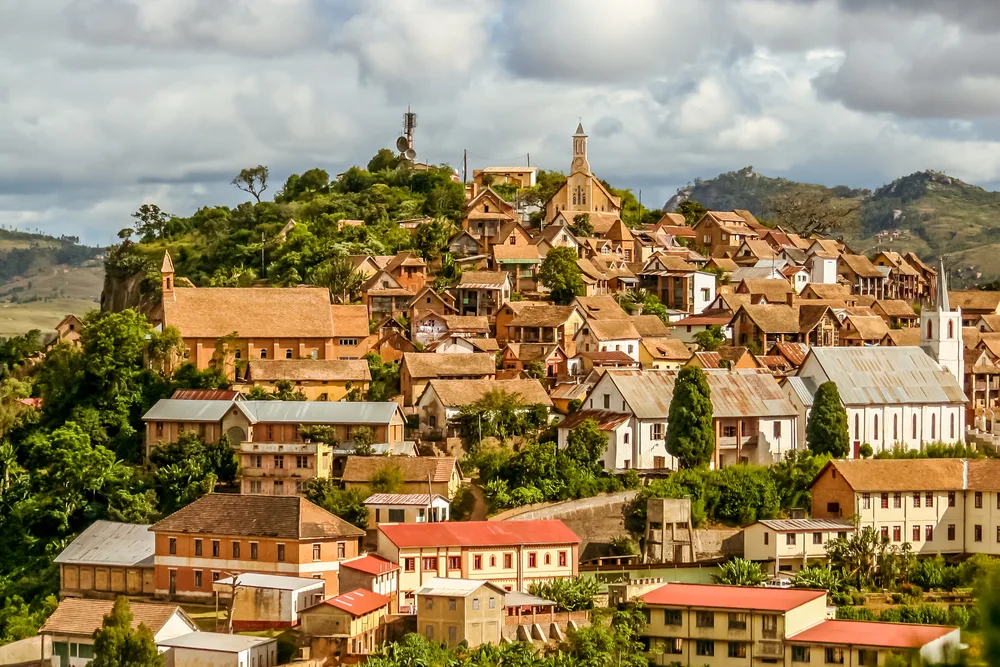
Pierre-Yves Babelon/Shutterstock
A primary concern for most visitors to Madagascar is crime. This concern is definitely well-founded. Most foreign governments list crime as the primary reason their citizens should exercise increased precautions while in Madagascar.
Madagascar didn’t use to be this violent, but the stress of the past few years has taken its toll on the populace. In 2010, Madagascar had an average homicide rate of about 2 incidents per 100,000 people, but that number has increased.
Finding good, up-to-date, and accurate statistics about crime in Madagascar is a challenge. Still, the public perception can help you see what is happening in the country.
According to Cost of Living, 78% of people believe that crime has increased in the past three years. People have high concerns about the overall crime level, as well as certain crimes such as break-ins, car break-ins, muggings, robberies, thefts, and assaults.
People also report high levels of corruption and bribery, which can certainly help explain why the levels of other crimes are so high. There are a few reasons why the crime rate in Madagascar is rising over the past few years.
As mentioned above, the famine plays a huge role. Drought and hunger erode social structures and push more people into a life of crime. Madagascar also has a relatively high organized crime presence.
It scores a 5.59 criminality score out of 10 on the Global Organized Crime Index. Organized crime groups are behind human trafficking and other crimes. Arms trafficking is one of the biggest sources of crime in Madagascar, especially in regions where cattle rustling is a common crime.
Criminal groups also exploit the island’s unique environmental resources for profit, illegally logging and harvesting precious materials to sell abroad. With all these bad statistics about Madagascar’s crime rate, it’s important to put it in perspective.
The violent crime rate is lower than in some cities in the United States. Madagascar is also safer than many other African nations. Although the crime rate has increased recently, it was fairly low to start with.
Petty Theft
The most common crime that affects tourists in Madagascar is petty theft. Most people are not hardened criminals but thieves of opportunity who take advantage of distracted tourists to make away with some valuables.
Thieves will pickpocket and snatch bags but also conduct muggings around areas where foreigners congregate. The Canadian government warns that criminals often target foreign visitors because they assume they will get more money.
Be careful around popular tourist destinations in the capital Antananarivo such as the Rova steps, Avenue de l’Independence, Analakely market, and the area around the Soarano train station.
Theft from vehicles is also a growing problem. If you are parked, never leave valuables in your vehicle, especially not in plain sight. Thieves will also target vehicles that are stuck in traffic.
When you are driving or a passenger in a car, always lock all your doors and windows. Be careful when you are in remote areas as well. The UK government reports that there have been robberies on beaches and hiking trails.
Always go hiking with a larger group or a trusted local guide. Choose your beaches carefully, and never go alone. If it feels secluded, it might turn out to be the opposite of the island paradise of your dreams.
Some basic precautions that you might take anywhere you go against pickpocketing can help in Madagascar. Don’t flash valuables such as lots of cash, credit cards, and expensive technology or jewelry.
Not only does it make you a target, but it is also a bit insensitive to do so in a place where locals until recently were suffering from famine.
Make copies of your ID that you can stash in a safe place and keep most of your cash in a hotel safe, only taking out what you need for the day. Don’t walk around alone in unsafe areas, and definitely don’t do so at night.
Highway Robbery
Petty theft is the most prevalent form of crime in Madagascar, but it is not the most concerning. More violent forms of theft are also on the rise. The U.S. Embassy reported an increase in break-ins, especially targeting ex-pat residences, carjacking, and other forms of violent robbery.
Of these forms of robberies, the most common and most dangerous is highway robbery, carried out by armed bandits. These bandits are often connected with dangerous cattle rustlers who plague villagers in rural areas.
Bandits will stop private cars and shared taxis, such as taxi-bes and taxi-brousses, to rob the passengers. This is hardly a problem that is confined to rural, remote roads — armed bandits are known to set up blockades on national highways.
If you notice a roadblock while you are driving, chances are high that a robber is behind it. The organized groups will sometimes stage a breakdown that conveniently blocks the road, then violently rob passengers who stop.
In remote areas, villagers will organize their own roadblocks and ask for monetary compensation in exchange for allowing vehicles to pass.
It’s better to travel with a trusted driver who is local to the area and knows how to avoid these roadblocks than renting your own car and potentially running into trouble (and dealing with poorly maintained Madagascar roads).
When traveling with a taxi, make sure you have a trusted company or taxi driver, as some taxi-brousse drivers work in league with robbers.
Most instances of highway robbery occur at night, so the best way to avoid being a victim is to travel only during the day. Don’t leave the city or town where you are staying at night as the roads are far too dangerous.
Avoiding Bad Areas
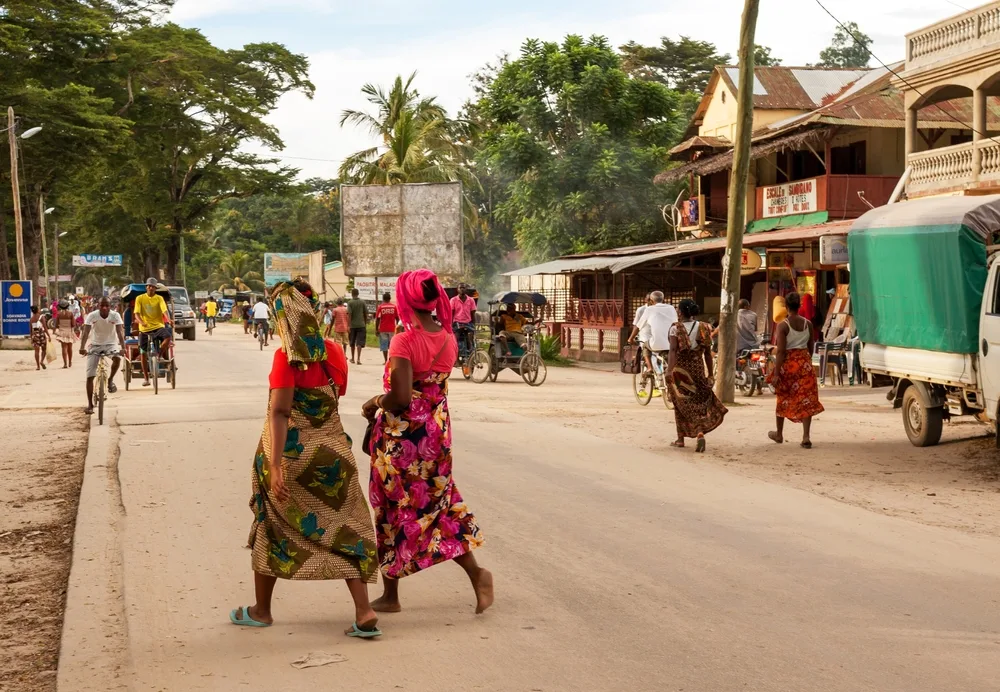
AMBANJA, MADAGASCAR – Apr 12, 2017: Two colourfully dressed women cross the busy main street of Ambanja, Madagascar, filled with rickshaws, bicylces, pedestrians and an occasional car/Wirestock Creators/Shutterstock
Certain parts of Madagascar are more dangerous than others, so avoiding bad areas can help you avoid the worst of the violence on the island. The Australian government provides an extensive list of regional areas to avoid.
In Northern Madagascar, avoid Nosy Be, Ankify Port, and Ambanja. In Western Madagascar, be careful around Besalampy, Morombe, and Maintirano. Highway robbery on National Roads is prevalent in this region, so never travel at night.
Avoid the city of Toliara, especially Batterie Beach, where there have been many dangerous assaults against visitors. In Southern Madagascar, the most dangerous region is between Ihosy, Toliara, and Fort-Dauphin, commonly called the Southern triangle.
Antananarivo, the capital, has bad areas like many other cities. Places that are popular among tourists and ex-pats, such as the districts of Itaosy, Tsaralalana, and Antaninarenina, are also frequently targeted by robbers.
Things to Consider
Here are some other things to keep in mind while in Madagascar:
- Carrying your ID at all times is mandatory, and police won’t be satisfied with a color copy.
- In rural areas, the presence of law enforcement is limited to Gendarmes who have limited resources and may be far away, so be aware that help may not be on the way soon if something happens.
- Madagascar has periodic outbreaks of the bubonic plague, but this disease is confined to remote villages that live in awful sanitary conditions, and the Madagascar authorities have already developed a functional public health system for containing outbreaks.
- The lemurs at Berenty Reserve are a popular tourist attraction, but they’ve developed a thieving habit! Always keep your windows closed if you are staying on the reserve and want to go home with all of your valuables.
Frequently Asked Questions
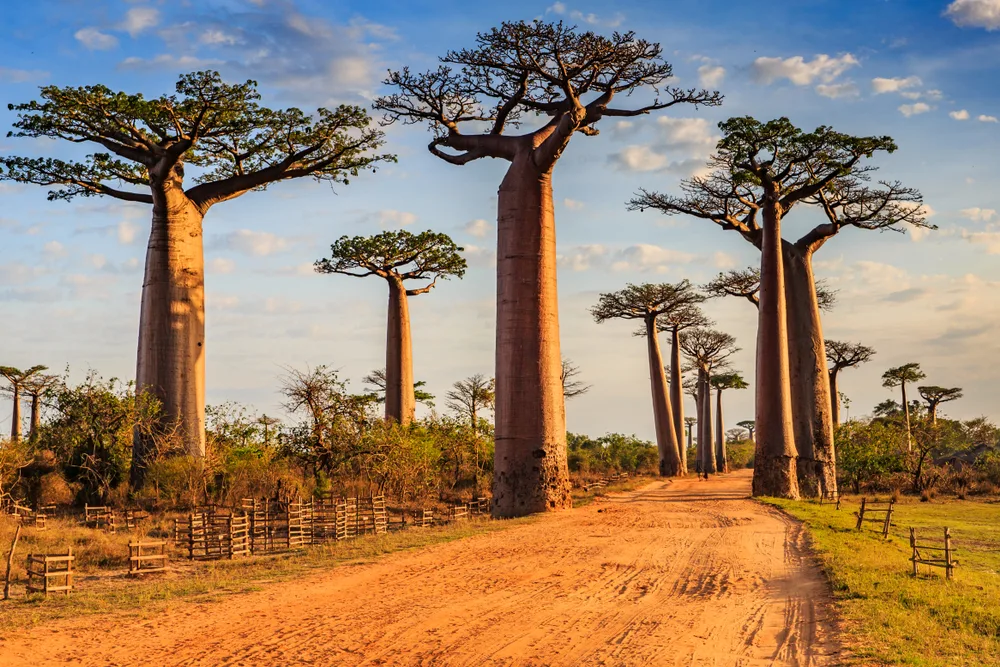
Vaclav Sebek/Shutterstock
Here are some other questions visitors to Madagascar had before:
Is Madagascar good for tourists?
Madagascar is certainly great for travelers looking to get off the beaten path. However, the infrastructure is not that well-developed for tourism, and the crime rate is increasing, which means that tourists in search of an easy getaway may want to look elsewhere.
Why is Madagascar not a tourist destination?
When you visit Madagascar, you’ll be one of only a few foreigners there. Despite amazing national beauty, poor infrastructure, unreliable transportation, and a lack of ability to invest in better tourism offerings prevent Madagascar from being a better tourist destination.
What are dos and don’ts in Madagascar?
In Madagascar, learn a bit about the local culture to show politeness. Always accept food and drink if you are a guest in someone’s home and follow the local lead on taboos and customs. Dress conservatively. Don’t do things that might put yourself at risk, such as exploring at night or interacting with beggars.
Is Madagascar cheap to visit?
Once you get to Madagascar, food and accommodations are generally affordable. However, transportation to the country and within it can get expensive.
Is Madagascar safer than South Africa?
That depends on where you look. Madagascar has a lower crime rate than big South African cities such as Cape Town and Johannesburg. However, the infrastructure is better in South Africa in case something does happen to you.
So, Should You Take a Trip to Madagascar?
Madagascar is a destination that is better for experienced travelers. It takes some effort to navigate around safety challenges, such as a high crime rate, but the rewards are great. So what are you waiting for — book your trip today!



